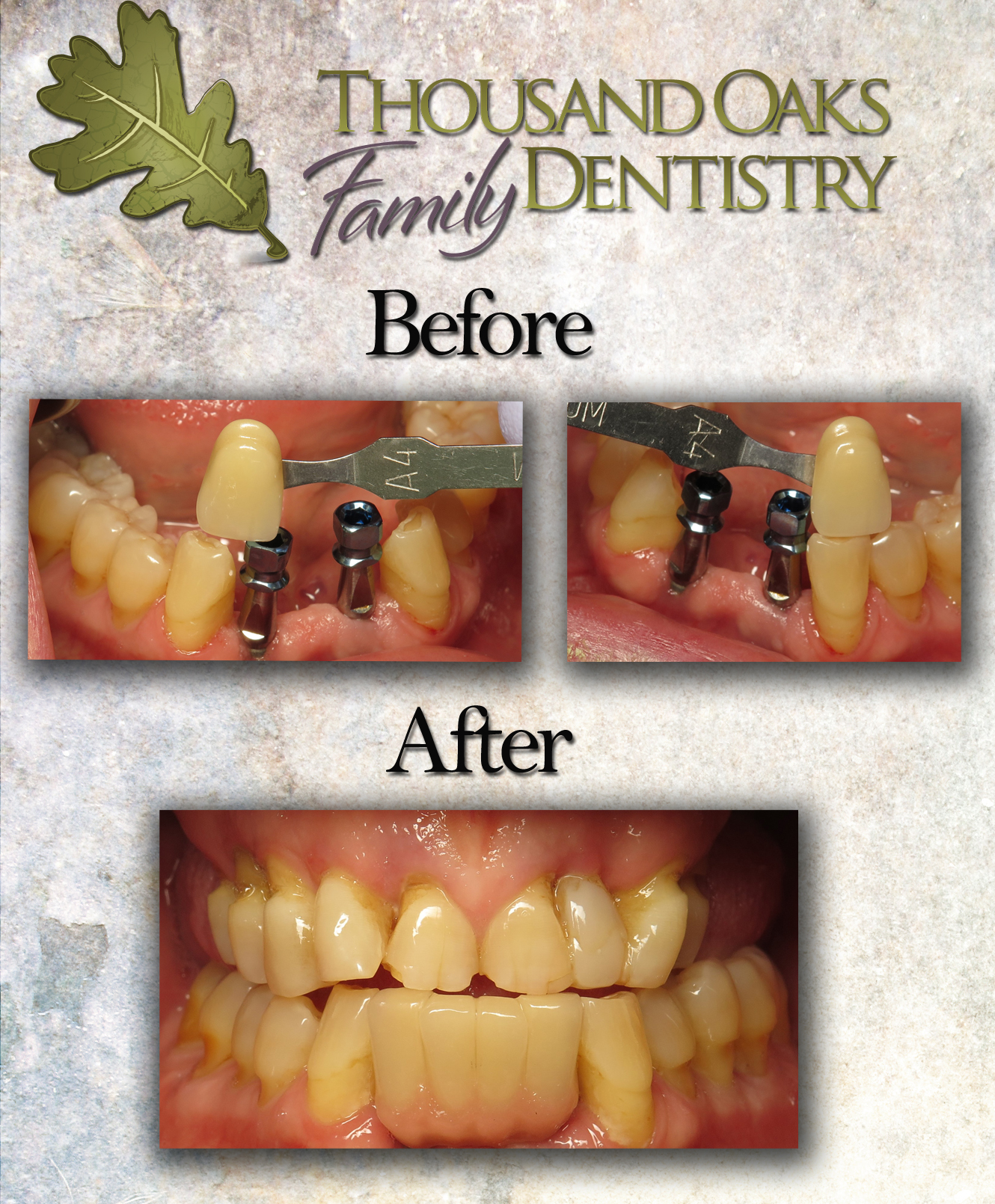The top photos show the shade guides used by the lab to match the adjacent teeth. The metal pieces indicate the location of the implants for the impressions. The bottom photo highlights the great job Opus One Lab did in matching the colors of the teeth and gums!
Bet you've never seen implants like this! Today's patient came to us after having lost their lower anterior incisors due to periodontal disease. Periodontal problems are common in this area due to a combination of plaque buildup, poor access due to crowding and (sometimes) tension of the lower lip on the gum tissues. Unfortunately, losing these teeth can have many undesirable effects, such as problems tearing food and lack of esthetic support for the lower lip.
In treating this patient, two implants were placed by a specialist next to the lower canines. Once the surgical sites were healed, impressions were taken and sent to Opus One Dental Laboratory. At the lab, Four prosthetic teeth were created in a bridge from implant to implant. To correct for the missing bone, pink porcelain was added to the bottoms of the teeth to simulate gum tissue. The result is a very functional and natural looking replacement! If you would like to know more about amazing transformations we can achieve with dental implants, please give our office a call!








